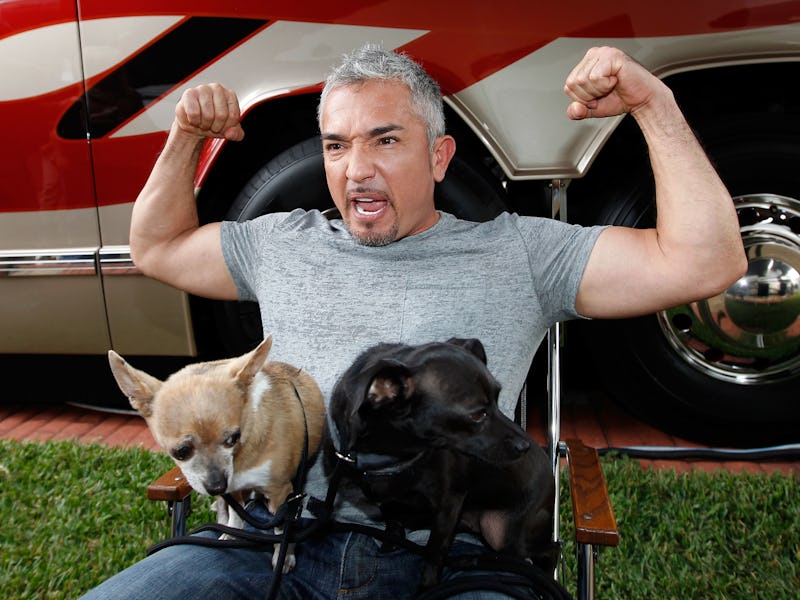Don't Be Surprised Cesar Millan is Under Investigation for Animal Cruelty
The alleged cruelty, perhaps surprisingly, was not against a dog.

Cesar Millan, the famed dog trainer of and man behind Dog Whisperer and Cesar 911, is under investigation for animal cruelty, CNN reports. His critics will be surprised, and perhaps disappointed, to learn the alleged cruelty was not against a dog, but a pig.
In a recent episode of National Geographic’s Wild’s Cesar 911, a French bulldog named Simon is placed in a pen with pigs during a training exercise. After Simon attacks a pig, Cesar grabs the dog and another staffer grabs the pig, holding him back by his rear leg. They both let go of the animals, and Simon goes for the pig, again, taking off a big chunk of its ear.
“In the video, someone has taken a pig and holds its rear leg in the air while another animal, a dog, runs to attack it,” Aaron Reyes, a director with the Los Angeles County’s Department of Animal Care and Control, told CNN. “That, in and of itself, is a penal code animal cruelty violation in the state of California, but the office still needs to investigate the circumstances.”
Simon has a history of aggression with pigs. His owner, Sandy, used to have two pigs until she made the mistake of entrusting them to Simon in the yard. When she arrived on the scene, it was a “bloodbath,” she says in the episode. One pig was dead, and the other had to be put out of its misery. Millan himself is a very controversial figure in the world of dog training. Many experts criticise Millan for being too aggressive, and applying too much physical force in his quest for submission. “He has set dog training back decades,” writes one trainer.
Renowned animal behavior specialist Temple Grandin wrote about Millan’s methods in her book, Animals Make Us Human, arguing that Millan’s focus on being the dominant pack leader is not appropriate. Dogs live (and has always lived) in families, and they need parents, not staunchy authority figures. Some parents may demand unquestioning discipline from their children, but that approach tends to backfire, and bite those parents in the ass (or ear). Most experts agree that when raising humans and dogs, it’s better to set limits and boundaries, but still tend to the child’s/pet’s emotional wellbeing.
Still, it’s easy to be wowed by the immediate results that Millan appears to achieve — working with even the most aggressive dogs. Later in the show, you see Simon-the-pig-killer being led around a yard, leashed to the very pig he had previously bitten. Simon doesn’t appear coerced or afraid, just calm and resigned; wherever this pig chooses to go, he must follow.
In the episode, Millan defends the risky encounter that spurred the pig attack. “Simon already killed two pigs. In order for you to tell him not to kill a pig, you actually have to catch him before he kills the pig. Otherwise he has never learned not to do it.”
Sure, but couldn’t the socialization process go a little more gradually, with a few more protections for the pigs? It hard to say how much time Simon spent with the pigs before he unleashed himself on them, but it appears to be within the first training session at Millan’s facility. National Geographic Channels defended Millan’s methods in a statement to CNN, saying that the clip of the incident on the show omitted important context.
“Cesar has created a safe and controlled environment at his Dog Psychology Center (DPC) in California in which to rehabilitate some of the most extreme — or ‘red zone’ — cases of dog aggression, such as Simon’s. It is important to clarify that Cesar took precautions, such as putting Simon on a long lead to assess his behavior, before making initial corrections and removing the leash.
“The pig that was nipped by Simon was tended to immediately afterward, healed quickly and showed no lasting signs of distress. As the additional clip reveals, Cesar and his animal pack effectively helped Simon to overcome his aggressive behavior toward other animals; as a result, Simon did not have to be separated from his owner or euthanized.”